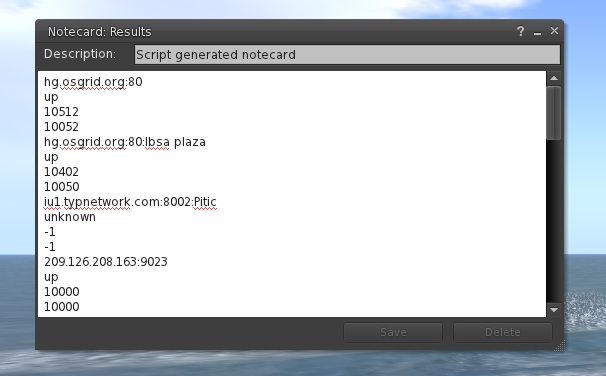
But the limits on the free account are pretty good - you get ten free applications, 1 gigabytes for data storage, and 3,000 free calls a minute - more than half a million a day. Well, free for small projects - if you’re running something big and commercial on it, you’d have to pay some dough. It uses a Python script running on the Google App Engine, a free, cloud-based place to deploy applications and databases. I turned to Latif Khalifa’s Grid URL Persister for inspiration. So I was looking for a way to save data into some database somewhere - ideally, a free database. I assume - I don’t know what the limits are here. And there’s only so much text you can load at once. If anyone can, and can write a sample script to edit existing rows of data, please please let me know! And you also can’t search through data - you can only load the entire sheet and then search through it inside the script.

Unless you can figure out the Google API and authentication mechanism, which I couldn’t. The downside to using Google Spreadsheets is that you can only add rows of data - you can’t edit existing rows. Here’s my sample script for logging visitors to a Google Spreadsheet, and another one for displaying the data from a Google Spreadsheet. Okay, maybe that’s not so useful, but you could also use the same method to, say, send messages across grids, or update the location of hypergates, like what I needed - or set high scores for a particular game.Įarlier, I used a Google Spreadsheet to store data. If you had some permanent way to store the variable, then you could, say, change the color of that same house everywhere - even on other grids - when you change any one instance of it.

You can add the color - say, “blue,” to the description line, but if you change the description, you lose the data. And you want it to remember the color it was set to last, so you don’t have to keep setting it each time you rezz the house.

Say, for example, you have a house that changes colors. Many scripts in OpenSim need to store variables, someplace where they won’t disappear. Â So I needed a way for the hypergates to look up the HTTP addresses of the mid-point transit gates, in order to find out whether they were available, and to tell them the final destination the avatar wants to go to. Now, there is a way for objects to send messages to one another via LSL, but it requires knowing the object’s HTTP address - and this HTTP address can change. However, this required a way for gates to communicate with one another, even if they were located on different grids. Late last summer, I had an idea for a hypergate script that would automatically calculate the distance to your destination’s address and, if it was too far away, send you to a mid-way transit gate on Hyperica, and then that gate would send you on to your destination.


 0 kommentar(er)
0 kommentar(er)
